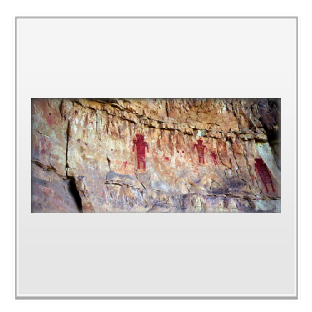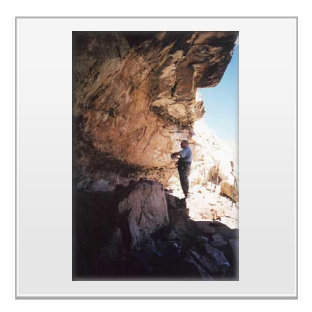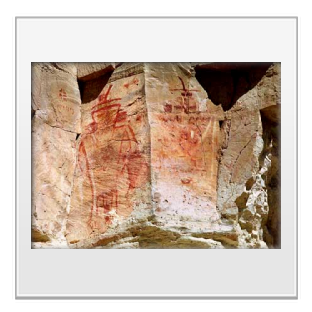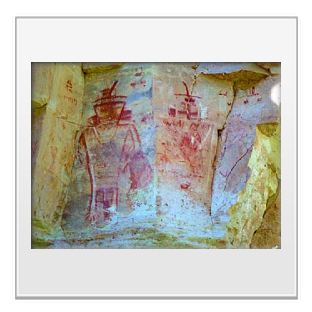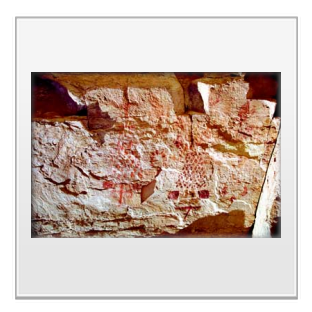Charles Cave in Snake Gulch - Passport in Time
Main menu:
Previous Projects > States A-F
Charles’s Cave in Snake Gulch
Kaibab National Forest, Arizona, 2000
by Robert Kasal, PIT Volunteer
In September 2000, a group of three PIT volunteers entered Snake Gulch in the Kanab Creek Wilderness in northern Arizona to continue and perhaps conclude a rock art survey begun in 1987 by archaeologists from the Kaibab National Forest. The volunteers had participated in previous recording sessions in the gulch, a 22-mile-long canyon containing a stunning collection of rock art with elements that date from 500 B.C. to A.D. 1150, including eight sites nominated to theNRHP.
Under the direction of FS archaeologists John Hanson, Larry Lesko, Connie Reid, and Neil Wientraub, the volunteers revisited sites where they and other volunteers had previously recorded many of the hundreds of images in more than 60 known sites along cliff faces of Coconino sandstone lining the bottom of the gulch. Deterioration from weather, erosion, and vandalism added urgency to the recording of information about the images, most of which were pictographs (painted) rather than petroglyphs (pecked).
Research and comparison to other rock art sites suggest that Snake Gulch was a major social gathering place on the Arizona Strip from the Late Archaic to the Pueblo II period (approximately 500 B.C.–A.D. 1150).
While working day after day, seated before a rock panel covered with perhaps large anthropomorphic figures, groups of mountain sheep, birds, even dogs, and a variety of abstract elements, one begins to feel like a participant in the life that created the images; they come alive. Actual handprints of yellow paint left by the ancient artists give startling testimony to the life that existed before recorded history in this now desolate canyon. You feel as if an ancient artist might be standing behind you, watching you draw on paper what he or she had painted long ago on stone.
The three 2000 PIT volunteers in Snake Gulch were Carolynne Merrell from Montana, an active researcher who pioneered the use of computer manipulation to enhance rock art images; Charles Marie, a well-known painter who holds a degree in archaeology from the University of Maryland and now owns the Mountain Gallery in Bisbee, Arizona, where he continues his artistic career; and me, a retired university art professor from Oregon, now living in Arizona.
It is Charles whom we all admire for his astounding efforts on the Snake Gulch project. Clearly a master draftsman, he produced a ream of drawings of rock art from the gulch, including a series from a shallow cave. The cave wall was divided into 18 panels, each containing dozens of figures, large and small, some overlapping others, and some as faint as whispers from the past.
During the final week, while Robert took time off for a daily nap and Carolynne sacrificed her allotment of drinking water for a hair wash, Charles worked hour after hour and day after day, unrelentingly, to make a permanent record of the myriad bits of information from ages past and from people too remote to be known well. For his remarkable effort during the 2000 project and previous visits, we suggest that the site be forever known as “Charles’s Cave in Snake Gulch."
